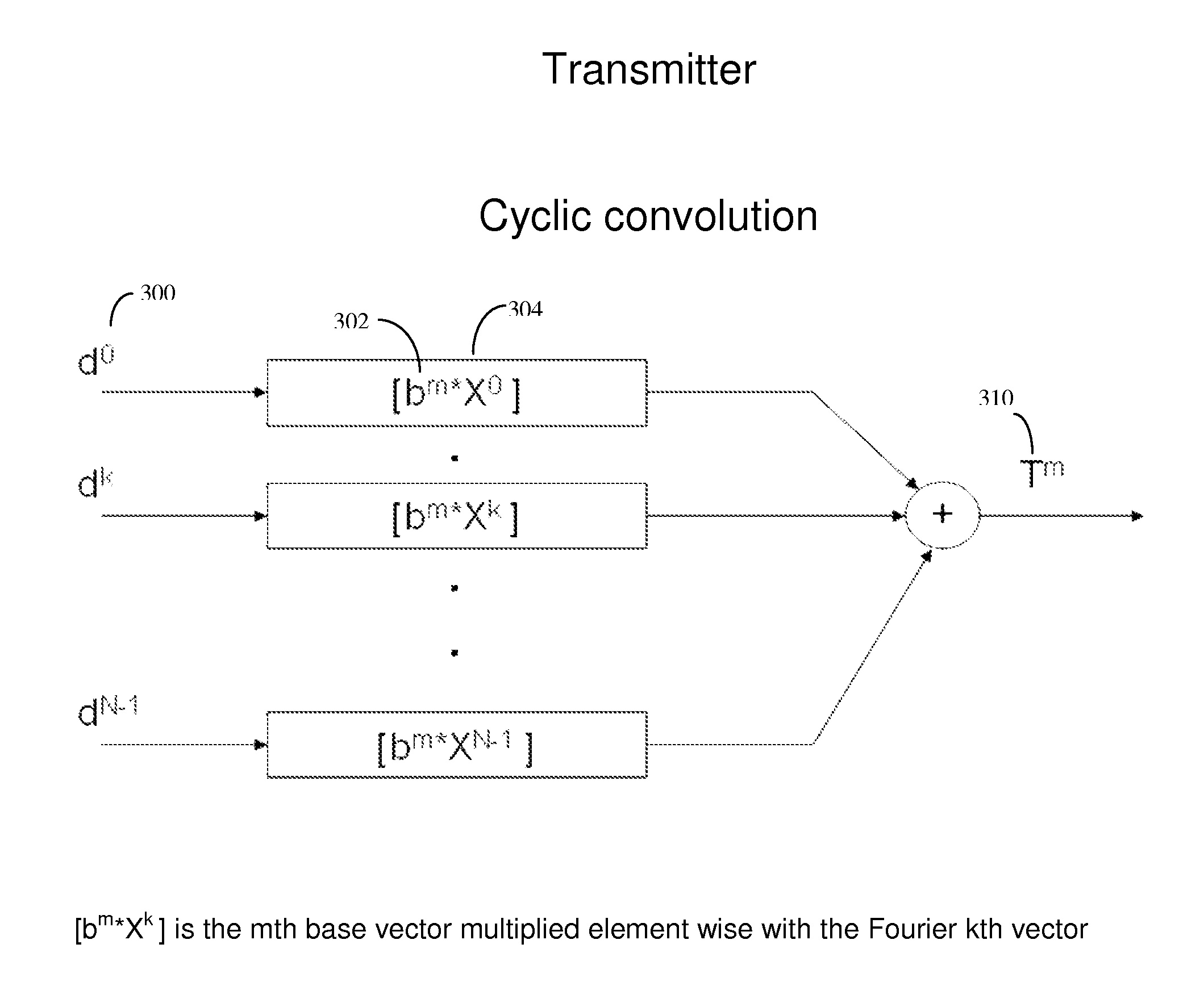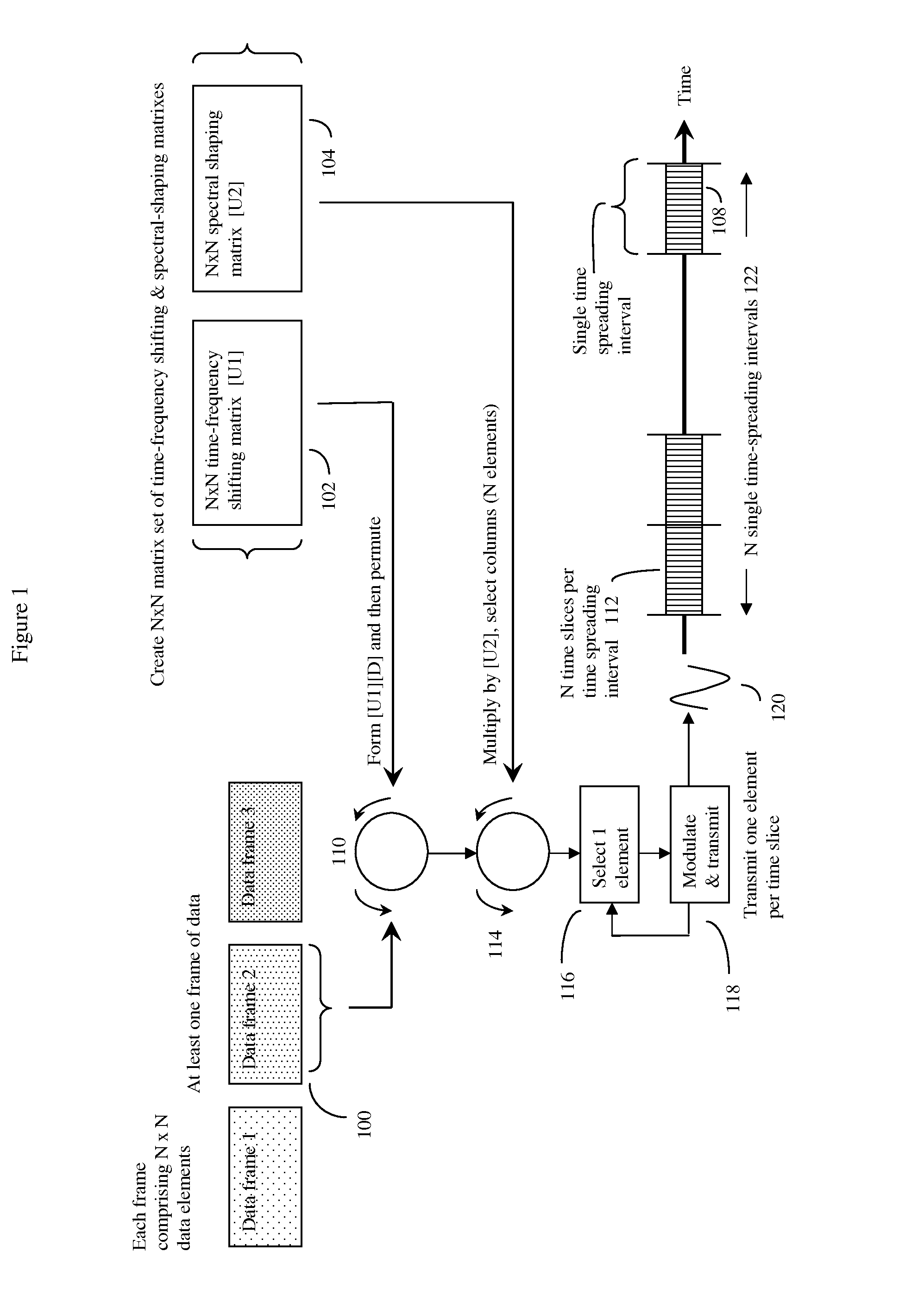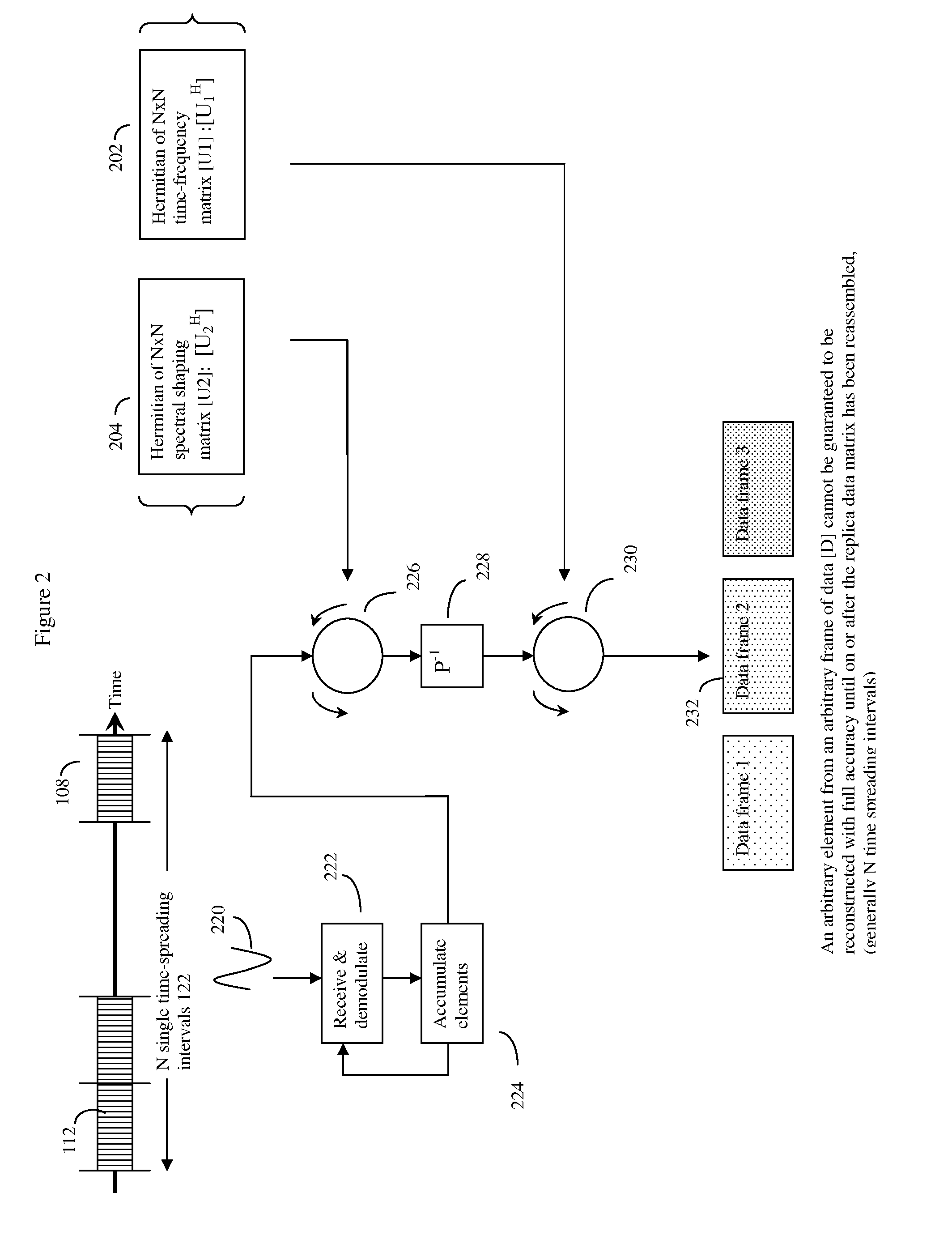Communications method employing orthonormal time-frequency shifting and spectral shaping
a technology of time-frequency shifting and spectral shaping, applied in the field of wireless communication protocols and methods, to achieve the effect of avoiding slowing down data rate and substantially minimizing the impact of doppler “collision”
- Summary
- Abstract
- Description
- Claims
- Application Information
AI Technical Summary
Benefits of technology
Problems solved by technology
Method used
Image
Examples
Embodiment Construction
[0041]A unique aspect of the invention is the concept of spreading the data for a single symbol over a larger range of times, frequencies, and spectral shapes than has been employed by prior art methods. Although previous communication schemes have used methods in which data for a single symbol may be spread over different spectrums (i.e. spread-spectrum methods) in a given time interval, or methods in which data for a single element may be spread over a series of different channels or spectral shapes in a given time interval, or methods in which data for a single symbol may be assigned to be communicated to a particular time slot, one thing that previous methods all had in common was that the data for any given data symbol could be assigned to a unique time-spreading interval or time slice.
[0042]By contrast, the invention is based, in part, upon the realization that just as there are advantages to spreading the data to communicate a single symbol over multiple frequencies (e.g. for...
PUM
 Login to View More
Login to View More Abstract
Description
Claims
Application Information
 Login to View More
Login to View More - R&D
- Intellectual Property
- Life Sciences
- Materials
- Tech Scout
- Unparalleled Data Quality
- Higher Quality Content
- 60% Fewer Hallucinations
Browse by: Latest US Patents, China's latest patents, Technical Efficacy Thesaurus, Application Domain, Technology Topic, Popular Technical Reports.
© 2025 PatSnap. All rights reserved.Legal|Privacy policy|Modern Slavery Act Transparency Statement|Sitemap|About US| Contact US: help@patsnap.com



